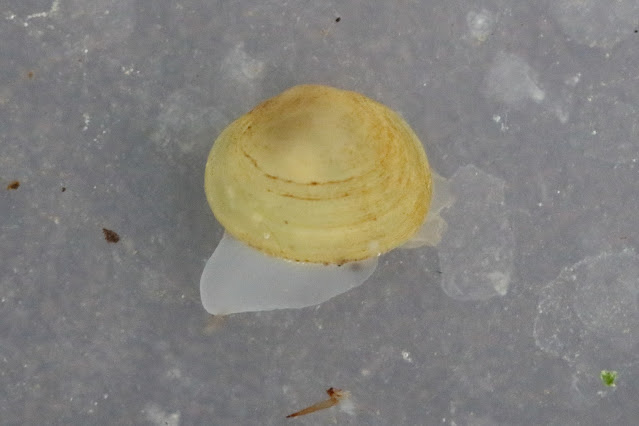29th July 2023 - eight NatureWatch members joined the trip to walk along the stretch of Fleam Dyke between the Bedford Gap and the A11. The aim was to see Chalk Hill Blue butterflies, and to see whether this summer they were as prolific as normal. Fleam Dyke is linear chalk soil site, good for a number of specialist chalkland plants, including Horseshoe Vetch, this being particularly important as the foodplant for Chalk Hill Blue butterflies. Other rare chalkland specific plants were also present, including Dwarf Thistle (aka Ground Thistle), Squinancy Wort and Clustered Bellflower.
During the walk, an impressive 18 species of butterfly were seen on the walk to and on the dyke, with Chalk Hill Blue and Gatekeeper being the most prolific. As it was a little breezy, many of the butterflies were staying closer to the ground sheltering amongst the plants, but when the wind occasionally eased, a host of Chalk Hill Blue suddenly appeared in their usual profusion.
A Brown Hawker was seen flitting skillfully through the grass stems, and a Hobby was also seen, passing low over the crop in the field alongside the dyke.
Male Chalk Hill Blue
Female Chalk Hill Blue - darker brown underside with checkered wing fringe,
and lacking the strong orange colouration of the Brown Argus
Male Chalk Hill Blue
Mating pair of Chalk Hill Blues ...
... with a second male trying his luck!
Another mating pair of Chalk Hill Blue
Male Chalk Hill Blue
Female Brown Argus - distinguished by brighter markings, and
the two spots close together (or 'twin spot') on the lower hindwing
Female Brown Argus
Holly Blue - pale blue underside, with several black spots
Gatekeeper - double eyespot, and line of white dots
on the lower hindwing
Gatekeeper
Painted Lady
Peacock
Small Tortoiseshell - a somewhat tatty specimen!
Comma
Brimstone
Small White
Large White
Green-veined White
Speckled Wood
Large Skipper
Essex / Small Skipper (exact id unclear)
Brown Hawker
General view of dyke
Greater Knapweed, Wild Parsnip, Spiny Plumeless Thistle
Dwarf Thistle or Ground Thistle
Dwarf Thistle or Ground Thistle
Squinancy Wort
Clustered Bellflower
Tufted Vetch or Cow Vetch
Restharrow
Common Toadflax
Ploughman's Spikenard
Fireweed
Brown Knapweed (white flower - an alien to the UK)
and Greater Knapweed and Clustered Bellflower





















































